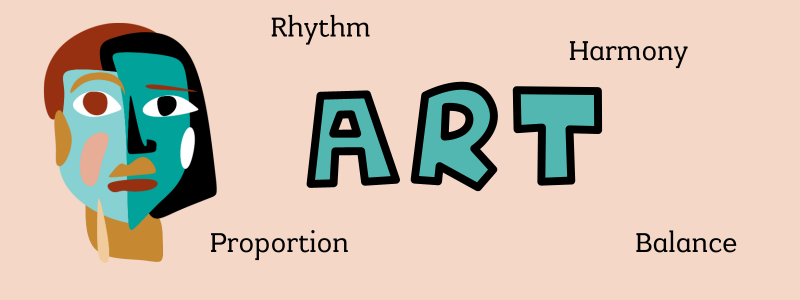The Complete Teacher
Vocational
Principles of art
Principles of art
Rhythm - A principle of design that indicates movement, created by the careful placement of repeated elements in a work of art to cause a visual tempo or beat.
 Balance - A way of combining elements to add a feeling of equilibrium or stability to a work of art. Major types are symmetrical andasymmetrical.
Balance - A way of combining elements to add a feeling of equilibrium or stability to a work of art. Major types are symmetrical andasymmetrical.
Emphasis (contrast) - A way of combining elements to stress the differences between those elements.
Proportion - A principle of design that refers to the relationship of certain elements to the whole and to each other.
Gradation - A way of combining elements by using a series of gradual changes in those elements. (large shapes to small shapes, dark hue to light hue, etc)
Harmony - A way of combining similar elements in an artwork to accent their similarities (achieved through use of repetitions and subtle gradual changes)
Variety - A principle of design concerned with diversity or contrast. Variety is achieved by using different shapes, sizes, and/or colours in a work of art.
Movement - A principle of design used to create the look and feeling of action and to guide the viewer’s eye throughout the work of art.
Sign in to add your comment.
Shortcuts

New art resources for African classrooms are available.
Visit the page to access and download free resources.
To explore the resources, click here.
If you would like to be part of our community, please click on the link provided.
.






